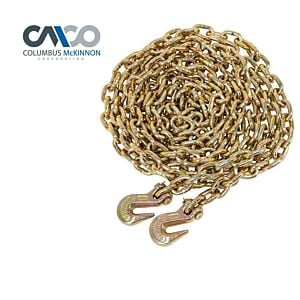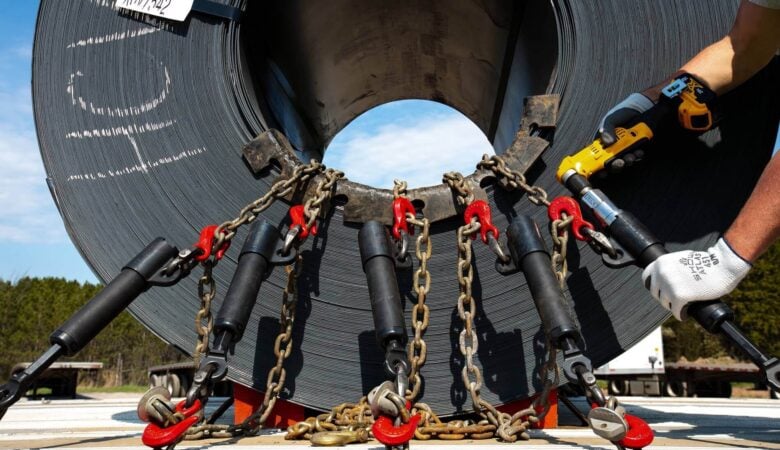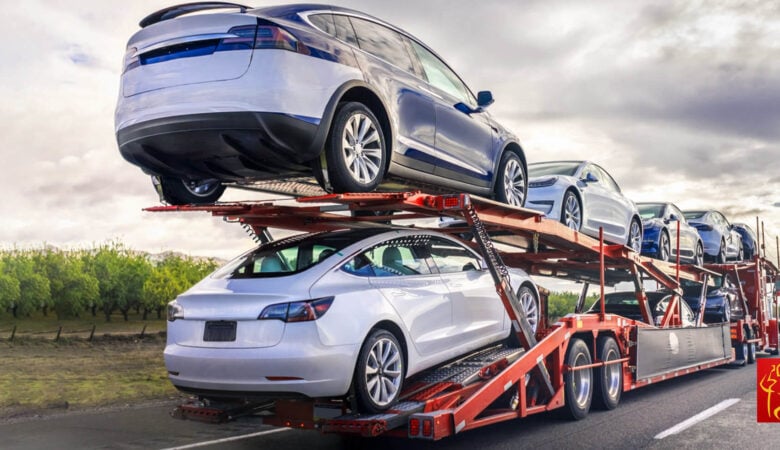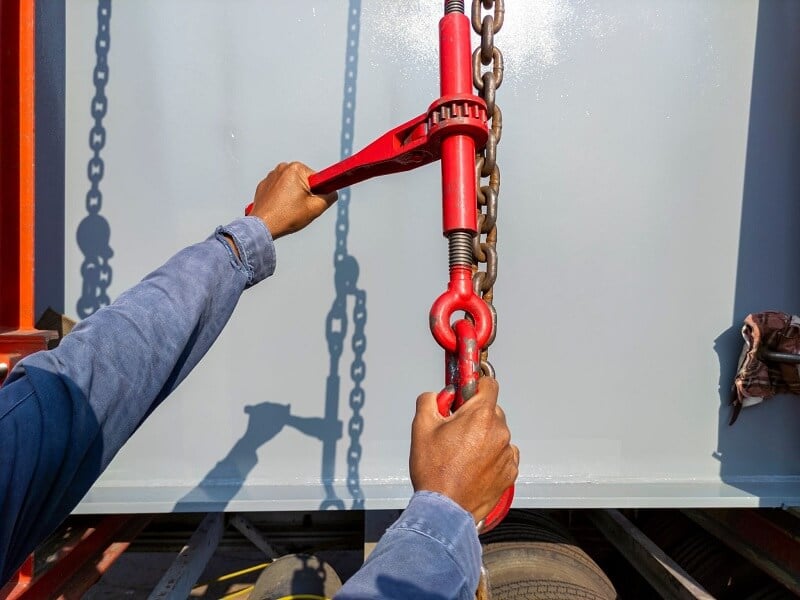Today a customer pulled into one of our docking bays hauling stacked crushed cars and we noticed something very interesting about how these cars were secured.

If you look closely between the chains and the winch strap on the right, this hauler is using a combination of tie-down chains and winch straps to keep this stack of crunched cars tied down.

As you can see, they hooked the chain on itself making a loop, and hooked the flat hook of a winch strap into it, keeping the chain held down. While this may look janky and odd at first glance, this is actually a smart way to secure loads like this with chains.
Ideally, when you tie loads like this down, you should use chains since the cargo itself is already damaged or incapable of getting damaged, and the chains can withstand the roughness of the cargo. Straps can be used as well, but since this cargo is rough metal, you run the risk of the strap getting abrasions or breaking.
Also Read: Chains vs Winch Straps
More often than not, you might not have a chain that’s long enough to cover your load and maybe you can’t afford to risk a strap getting damaged or broken. Doing this is the next best thing, and if you’re wondering “What about working load limits?” Because you’re working with two different types of cargo control, the best way to figure out the working load limit is by taking the smallest working load limit of the two as the maximum. That way you’re well within the limits for both the chain and strap.
If you’re in the market for more chains or straps, we have more than what you’re looking for over on our website at MyteeProducts.com!













